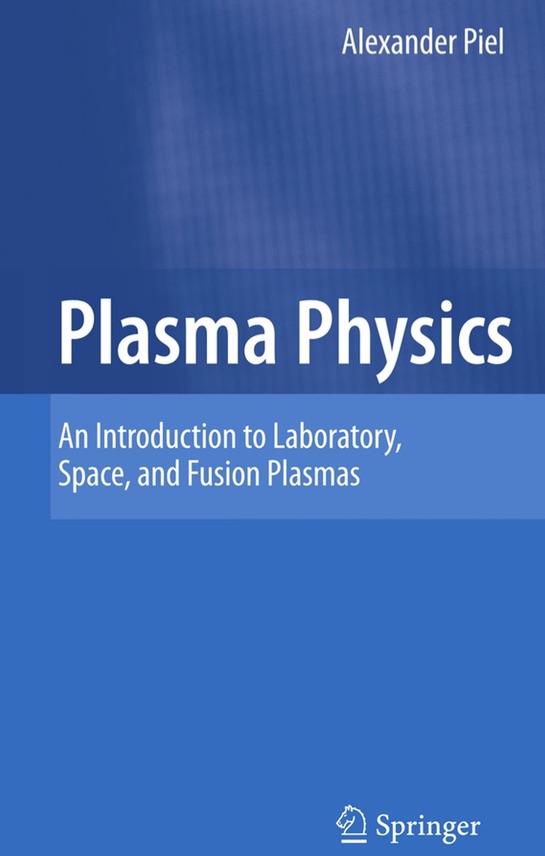The primary course textbook is Plasma Physics by Alexander Piel of Christian-Albrechts-University, Kiel, Germany. This is an excellent introduction to plasma physics, and we will be following the outline of textbook in the course.
I will also refer to other textbooks, and many of these books are available to Columbia University students via CLIO. These are:
- Plasma Physics : An Introduction to Laboratory, Space, and Fusion Plasmas by Alexander Piel (2nd ed. 2017; Springer). Online here.
- Introduction to plasma physics : with space, laboratory and astrophysical applications by Donald A. Gurnett and Amitava Bhattacharjee (2nd Ed. 2017; Cambridge Univ Press). Online here.
- Plasma physics : An introduction by Richard Fitzpatrick (2nd ed. 2022; CRC Press). Online here.
- Introduction to Plasma Physics and Controlled Fusion by Francis F. Chen (3rd ed. 2016; Springer). Online here.
- The Physics of Plasmas by T.J.M. Boyd and J.J. Sanderson (2003, Cambridge). Online here.
- Plasma Physics and Fusion Energy by Jeffrey P. Freidberg (Cambridge Unive Press, 2007). Online here.
- Magnetically Confined Fusion Plasma Physics Ideal MHD theory by Linjin Zheng (Morgan & Claypool Publishers, 2019). Online here.
- Fusion Reactor Design: Plasma Physics, Fuel Cycle System, Operation and Maintenance by Takashi Okazaki (17 November 2021, Wiley-VCH GmbH). Online here.
- Basic Space Plasma Physics by Wolfgang Baumjohann and Rudolf A. Treumann (3rd Edition, World Scientific 2022). Only intro online here.
- Space Plasma Physics : 1 Stationary Processes by Akira Hasegawa and Tetsuya Sato. (1st ed. 1989, Springer Berlin Heidelberg). Online here.
- Theory of Space Plasma Microinstabilities by S. Peter Gary (Cambridge University Press, 2005). Online here.
- Magnetohydrodynamic Stability of Tokamaks by Hartmut Zohm (Wiley 2014). Online here.
- Introduction to Plasma Physics by R.J. Goldston (CRC Press, 1995). Online here.
- Plasma Physics via Computer Simulation by C K Birdsall and A B Langdon (Taylor & Francis, 2004). Online here.
- Plasma waves by D.G. Swanson (Second edition, CRC Press, 2003). Online here.
Everyone can have access to these textbooks. As guidance and for clarity, this semester's syllabus will follow both the outline and content contained in the Alexander Piel's book.
Occasionally, I will present numerical illustrations of plasma physics using Mathematica. Mathematica is available to all students through Columbia University.
Frequently, I will also distribute published journal articles that illustrate the scientific progress and discoveries in the field of plasma physics.
